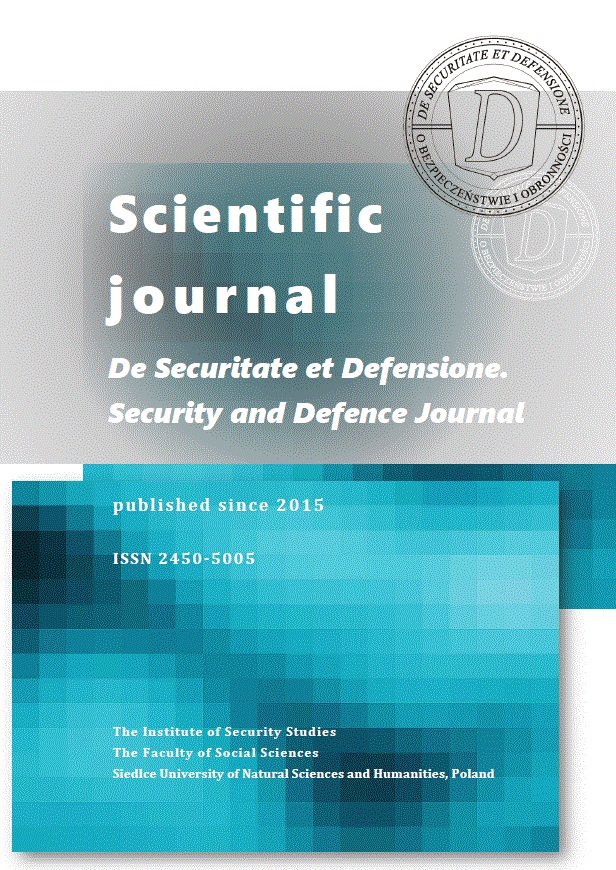HYBRID WARFARE IN THE BALTIC SEA. OUTLINE OF THE PROBLEM FOR THE SECURITY OF THE REPUBLIC OF POLAND
DOI:
https://doi.org/10.34739/dsd.2022.02.04Keywords:
The Baltic Sea, Hybrid Threats, Hybrid Warfare, information activities, international dispute, national interestsAbstract
The aim of this article is present possible scenarios in the Baltic Sea as a result of hybrid activities. At present in the literature of the subject Hybrid Threats - the Russian Federation especially in the aspect of the annexation of Crimea, reinforce the belief in the effectiveness of such actions. Most often it is presented that these are hidden actions, ambiguous, and thus causing difficulties in interpretation as to the act of the aggressor. Therefore, governments face the challenge of maintaining the current status quo and jointly try to develop effective tools to counteract such threats. It needs to be emphasized that the determination of states in achieving their national goals causes them to use tools from the political, economic and information fields as a cheaper alternative to military instruments. In addition, it should be emphasized that in the aspect of the Baltic Sea, excessive exploitation of living and non-living resources causes its continuous degradation. Therefore, in order to maintain international order in this basin, states and international organizations issue various types of laws and regulations to protect their interests and prevent further degradation of the natural environment. Due to their imperfection, they are subject to constant verification and updating, and in extreme cases may constitute an international dispute.
Downloads
Published
Versions
- 20.03.2023 (4)
- 20.03.2023 (3)
- 20.03.2023 (2)
- 03.03.2023 (1)




